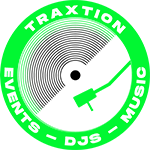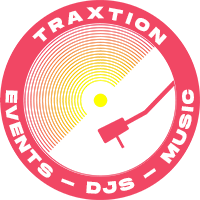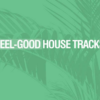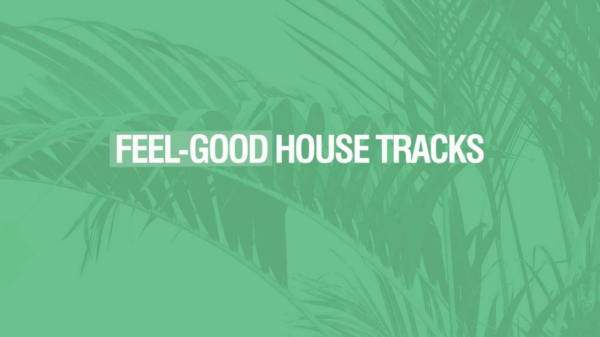MusicRadar is supported by its audience. When you purchase through links on our site, we may earn an affiliate commission. Here’s why you can trust us.
From ’70s roots to ’90s chart dominance, UK garage is the European cousin of a classic New York sound
UK garage emerged as a genre in the mid-’90s, but to understand where it came from we need to go back to ’70s New York, where a young Larry Levan got his first big break as a DJ and secured a residency at the new Paradise Garage club.
In much the same way as the music played at the Warehouse in Chicago was referred to as ‘Warehouse music’ and then house, the mixture of soul, disco and rock that Levan span at the club became known informally as ‘Garage music’. With the arrival of house in the ’80s and Levan’s position as one of the leading New York house DJs, this evolved simply into garage or garage house (these days you’ll sometimes hear it called New York garage, US garage or similar names to differentiate it from the UK genre).
As the sound crossed the Atlantic, hits like Rosie Gaines’s Closer Than Close (1995) inspired UK producers to imitate the American sound. Garage quickly evolved to suit British tastes: US tracks were pitched up to make them faster; the kleptomaniac sampling style of jungle and hardcore production took hold; MCs began to rap over the top of DJs’ selections. The UK sound matured around 1996 and 1997, when some producers moved toward a bass-heavy four-to-the-floor style known as speed garage – think Double 99’s RipGroove, or Armand van Helden’s remix of the Sneaker Pimps’ Spin Spin Sugar – while others headed in the direction of more delicate, vocal-driven sounds inspired by US tracks like Roy Davis Jr’s Gabriel, the Kelly G remix of Tina Moore’s Never Gonna Let You Go or the classic Todd Edwards remixes of St Germain’s Alabama Blues.
The first key tracks in the UK scene put a European twist on the production styles and techniques of American producers – heavily swung and syncopated house-inspired rhythms, deep bass grooves, soulful vocals and instrumentation – but presented them at a faster tempo, around 130-140bpm, with the addition of distinctly British style of rap vocal, derived from the rave and pirate radio jungle MC tradition.
Scott Garcia’s It’s A London Thing (1997) tried to stake a claim for ownership of garage, but within a few years the sound was a national phenomenon. In summer ’99, Shanks & Bigfoot’s Sweet Like Chocolate scored the first UK number one for the scene, paving the way for huge crossover hits for acts like DJ Luck & MC Neat, MJ Cole and Artful Dodger (launching the career of Craig David with it). The syncopated ‘2-step’ style took over from ‘4×4’ (four-to-the-floor) as the dominant trend.
For a brief, glorious moment, UK garage ruled the pirate stations and the pop charts simultaneously, but it couldn’t last. In a moment of tabloid moral panic, So Solid Crew’s December 2001 UK tour was cancelled by promoters following a shooting at a gig. With the emergence of the harder-edged, MC-driven sound that would shortly morph into grime, garage earned a (largely undeserved) reputation for violence, and the genre’s commercial moment in the sun ended around 2003.
For the best part of the next decade, garage’s most tangible impact came in the form of its influence on other genres: notably grime, dubstep, niche/bassline and UK funky. Moments of interest bubbled up as DJs and producers like Jamie XX and Disclosure worked garage elements into their sound, with the term ‘future garage’ being coined around 2009 to describe newer twists on the genre. Garage has never quite repeated the popularity it enjoyed around the turn of the millennium, but, if anything, its stock has risen over the last few years, with a new wave of producers like Conducta and Flava D exploring everything from retro throwback sounds to exciting hybrids with other production styles.

The best samplers 2020: standalone hardware instruments for live performance or studio production
The 18 best synthesizers 2020: top keyboards, modules and semi-modular synths
Future Music is the number one magazine for today’s producers. Packed with technique and technology we’ll help you make great new music. All-access artist interviews, in-depth gear reviews, essential production tutorials and much more. Every marvellous monthly edition features reliable reviews of the latest and greatest hardware and software technology and techniques, unparalleled advice, in-depth interviews, sensational free samples and so much more to improve the experience and outcome of your music-making.
Don’t miss the latest deals, news, reviews, features and tutorials
Thank you for signing up to Musicradar. You will receive a verification email shortly.
There was a problem. Please refresh the page and try again.
MusicRadar is part of Future plc, an international media group and leading digital publisher. Visit our corporate site (opens in new tab).
© Future Publishing Limited Quay House, The Ambury, Bath BA1 1UA. All rights reserved. England and Wales company registration number 2008885.







